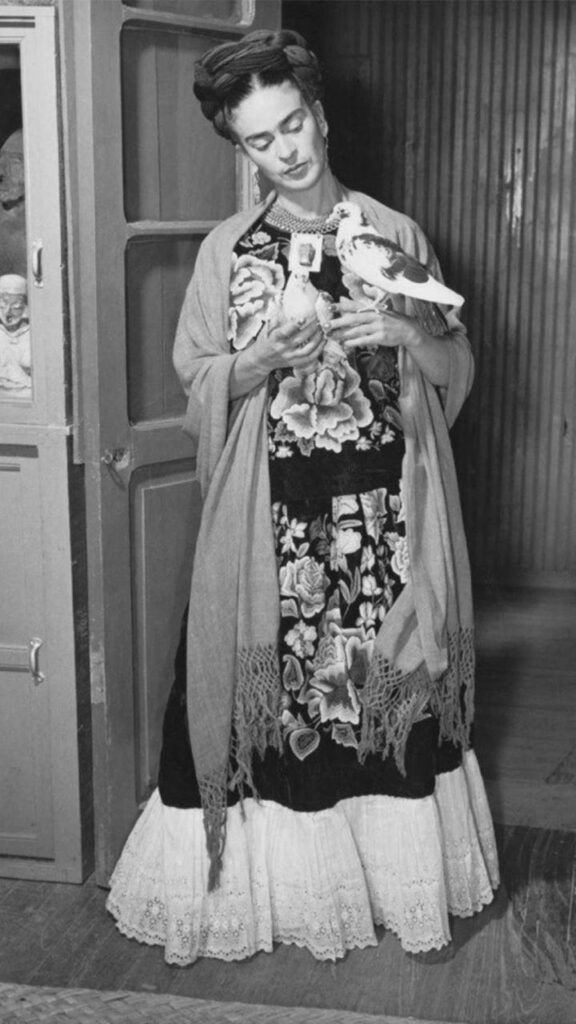
TOP: Tehuana huipil dress in black velvet with embroidered floral details. It is produced through a mixed technique, which consists in drawing flowers by hand on the fabric, and then using the pedal machine to create them, starting from zigzag seams. The use of both hands is required, as well as of foot for the pedal. This technique has nothing in common with industrial embroidery, as the process is not computerized or automated at all.
BOTTOM: skirt embroidered in the same techniques, with white lace flounce, and underskirt to give volume. The latter is a key detail of all traditional formal dresses from the Isthmus of Tehuantepec.
ACCESSORIES: typical headgear, starched lace resplandor, gold-plated necklace, and mantilla woven with waist loom.
RELEVANT DETAILS: in accordance with the tradition of the Isthmus of Tehuantepec, formal dresses must be in black velvet.
With the arrival of the 20th century and the celebrations for the centenary of Mexico’s independence from the Spanish colonial rule, Tehuana dresses began to be part of the Porfirian elite’s formal wardrobe. Great importance was given to Tehuana dresses by the President Porfirio Díaz, who was a native of the Mexican state of Oaxaca. When his mandate ended, with the Mexican Revolution which would overthrow Porfirio Díaz’s regime, a strong nationalist movement was born. Consequently, the dress ceased to be appreciated as a typical dress from the state of Oaxaca and became a true national symbol. Both during and after the Revolution, Frida wore this dress on several important public events held around the world. She was photographed with the Tehuana dress on, making it immortal and turning it in a real trend.
